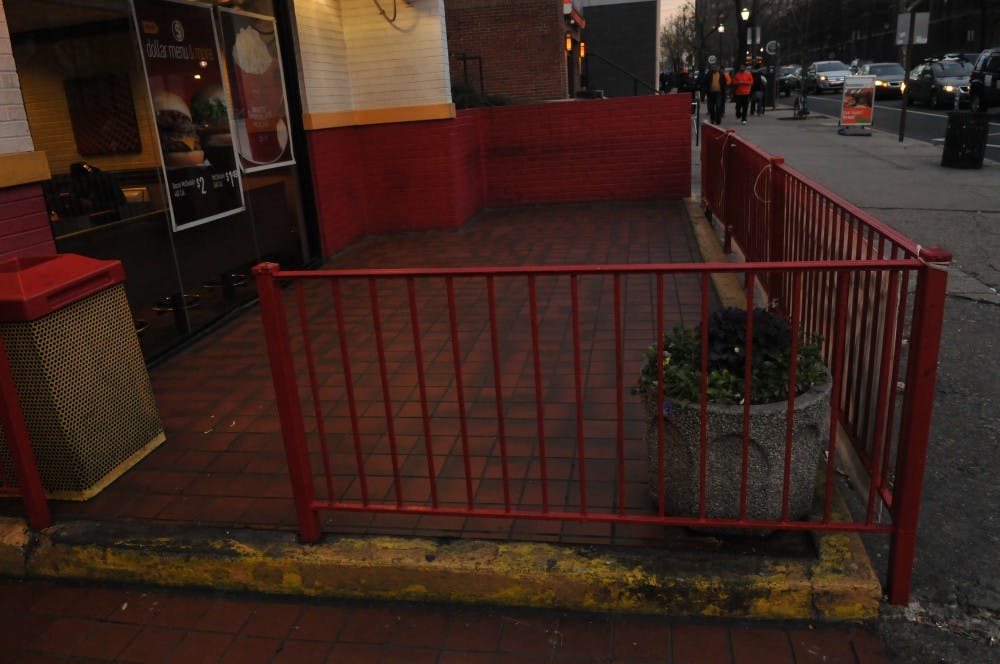This article was originally published as part of the joke issue on 12.5.2013
Burnt–red tiles deck the rectangular space in the front of the McDonald’s building at 40th and Walnut streets. The terrace, a semi–enclosed platform with metal railing, is an architectural statement: From far away, it beckons you in as a potential place for sitting and watching the day pass by with burgers and fries. But close up, the peeling paint, filthy surfaces and corroded cement reveal only apathy and neglect. There are no chairs, no tables; it’s empty. There’s no getting around it: The terrace is a failure.
A reasonably furnished terrace is the architectural equivalent to a welcome sign. When you see people eating and chatting outside a restaurant… well, hey, why not stop in and try it out? Unlike a dull, solid brick wall, the terrace could have oozed accessibility and fluid interaction. Its location out front encourages the inclusion of the outside, of people in passing. It’s like a metaphorical open window (which McDonald’s literally uses in drive–thrus).
Using the terrace at 40th and Walnut streets could not only have an impact on McDonald’s business by drawing in more customers, but also a social impact on the surrounding neighborhood. This nearly public space is perfect to promote the merging of two different groups—Penn students and University City residents—via a common place to sit and eat. Anyone can eat here. It’s physically designed to counter socioeconomic segregation.
Yet, this McDonald’s has a history of conflict and exclusion between the two groups. In the early 2000s, customers could find a local artist’s screen–printed propaganda posters covering McDonald’s walls. They read, in bold, “Stop UPenn, hands off our neighborhood.” Protestors from a local group called Neighbors Against McPenntrification (NAM) staged demonstrations outside McDonald’s less than ten years ago. There’s a long history of tension between West Philadelphians and Penn, which tried to relocate the restaurant to 43rd and Market streets in the 2000s. With semi–regular shootings and loitering groups of local teenagers, Penn wanted to keep the area safer by keeping the non–students away and moving the restaurant all together.
Today, we visit McDonald’s for our fast–food cravings and interact with outsiders, feeling secure (for the most part) all the while. In just a decade, intergroup conditions have improved due to a variety of initiatives, but displacement of the McDonald’s by Penn, or “McPenntrification,” was not among them. McDonald’s should always be a space for everyone, and that’s a message inherent in the architecture. Get on that terrace, Mickey D’s.

